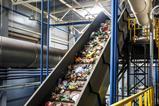REACHReady’s aim is to help our subscribers help themselves achieve compliance. A plethora of guidance and articles about REACH and CLP can make it all seem more complicated and difficult than it is, so much of what we do is to remove some of the mystery and fear. We want our customers to feel reassured through the advice and positive action plans we offer to those attending our training events, reading our technical guidance, using our helpdesk and benefiting from our consultancy services.
However, this short report issues a warning that is intended to make the reader sufficiently concerned to invest some time in the technical issues around the Chemical Safety Report (CSR), as wrong conclusions can have a potentially major impact on uses of chemicals later. There are technical issues relating to joint registrations that you do perhaps need to worry about.
Joint registration is encouraged by ECHA and allows considerable benefits to share costs, share work and to reach common technical endpoints including agreed classification. Data is being shared and joint registrants will be sharing the Derived No Effect Levels (DNELs) for workers and consumers and Predictive No Effect Concentrations (PNECs) for the environment.
Sharing exposure scenarios and the CSR as part of the joint submission will also allow cost and time savings, and registrants may choose to include their identified uses in a joint CSR. The decision to be part of a joint CSR may be based on commercial considerations – it has the short term potential to save time and money and perhaps improve the chances of having a compliant dossier. However, the technical implications of sharing the CSR may be far-reaching and costly in the longer term.
Due to the available guidance erring on the side of caution, there is actually a significant chance of excessive risk management measures being recommended that may also be too expensive for companies to implement.
Download full document













